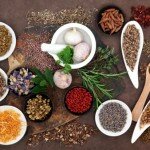How Wheat Can Damage Your Health
Recently, nutritionist Martin Hum wrote an interesting article for our specialist blog Real Diabetes Truth, about the negative effects of our western wheat-based diet.
It’s a sad fact that many of us believe we follow a healthy and balanced diet ? having three meals a day and avoiding processed foods as much as we can ? and yet, we still end up consuming hidden sugars and even gluten, which is often added to supposed low-fat diet products to enhance flavours and as a bulking agent.
Slowly doing the damage…
Have you ever picked up a product like tomato puree or tomato ketchup in a supermarket aisle and saw that the label said “gluten-free”… and then thought to yourself: Hang-on, isn’t this supposed to be naturally gluten-free?
Yes it is…
However, it’s not just bread, breakfast cereals, pasta and thousands of other wheat-based foods or food products that contain gluten ? a protein complex found in wheat.
Food manufactures often isolate gluten from wheat and use it as a bulking agent in other foods, like tomato ketchup, pre-made marinades, mayonnaise and even protein powders.
So, if you’re thinking that going gluten-free is as easy as eating a burger without a bun, think again.
But let’s forget about gluten for one moment and focus on wheat.
It’s particularly bad news for people with type 2 diabetes, or those at risk of developing the condition.
That’s because most wheat-based foods raise your blood sugar fast. They cause the pancreas to pump out plenty of insulin, which in time can lead to insulin resistance ? also known as being prediabetes.
Wheat can also lead to ‘pancreatic exhaustion’, when the pancreas is unable to secrete sufficient insulin. Both insulin resistance and ‘pancreatic exhaustion cause blood sugar to rise, raising the risk of type 2 diabetes, or aggravating the condition in those who have it.
Wheat is a problem in other ways, too:
- The starch called amylopectin-A, found in wheat, drives up your blood glucose almost as fast as refined sugar.
- Gluten (found in wheat, barley, rye and triticale) breaks down into protein fragments called peptides, some of which bind to opioid receptors in the brain. These “gluteomorphins” have an addictive effect, making it hard to stay away from wheat products.
- Gluten can also cause fatigue, brain fog, depression or spells of melancholy, irritability, anxiety and even migraine headaches, especially in people who have gluten sensitivity.
- Another wheat compound, wheat germ agglutinin, can cause gut inflammation leading to intestinal permeability or “leaky gut syndrome”. Leaky gut means that undigested peptides can pass into the bloodstream, causing multiple health problems.
Research suggests that gluten is a potential trigger that causes the immune system to attack the cells in the pancreas that secrete insulin, causing type 1 diabetes ? an autoimmune condition in which the body’s immune system.
The best way to avoid wheat and gluten is to avoid all wheat-based products. However, going gluten and wheat-free doesn’t mean you have to follow a grain-free diet. Ten gluten-free whole grains that you can incorporate into your diet are amaranth, buckwheat, corn, millet, quinoa, rice, sorghum, teff, oats and wild rice.
As a side note: Oats are inherently gluten-free but there has been some controversy because some oats products may be contaminated by wheat during production and processing. So, if you do enjoy oats, make sure that you buy steel cut oats or a product that is clearly labelled as gluten-free.
Did you find this information useful?
Then why not get more expert health recommendations just like this delivered direct to your inbox?
"It is truly refreshing to read a newsletter on the topic of alternative medicine which is scientifically based and reviewed by professionals..." - Robert Sinott
We respect your privacy and will never share your details with anyone else.Disclaimer: Bear in mind the material contained in this article is provided for information purposes only. We are not addressing anyone’s personal situation. Please consult with your own physician before acting on any recommendations contained herein.
Sources:
Antvorskov JC, Josefsen K, Engkilde K, Funda DP, Buschard K. Dietary gluten and the development of type 1 diabetes. Diabetologia. 2014; 57(9):1770-1780
- Comments (1)
- Facebook Comments (0)











Oats is often grown in rotation after Wheat or Barley and spilt grain from the previous crop can grow with the oats and be harvested with it. To be sure oats are gluten free it is important to select pure oats not standard commercial oats.